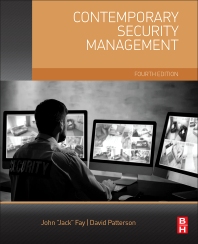Updating emergency response and preparedness plans

It’s no surprise employers are reevaluating how to best protect employees both on-site and remotely in a year of unprecedented changes that saw employers redefine the workplace and establish flexible modes of communication with a workforce that could be in the workplace, working off-site or remotely—or in a combination of these environments.
And, while quarantine and social distancing restrictions and a surge in remote work meant that events like active assailant incident or workplace violence were not as common in 2020, it’s essential employees understand safety and security procedures as they return to the office. A recent survey by Rave, however, reveals a third of respondents are not aware of or not sure about emergency plans for certain emergency incidents, with most “no/not sure” responses for emergency plans related to active shooter incidents, cyberattacks/system outages and workplace violence.
In addition, the survey found workplaces are not practicing for prevalent events like medical emergencies and severe weather. Thirty-seven percent of respondents said that their employer never held safety drills for medical emergencies or exposure to illness and 38% of respondents said they never drilled for severe weather events.
As workplaces have had to change the way they do just about everything – from employees working remotely, to virtual meetings and conferences, and more, planning for an emergency has had to change as well. Prevention, response, and mitigation planning is critical to ensure employee safety operations and business continuity in the out years. Here are four steps that you should keep in mind as you update and improve your organization’s emergency response and recovery plans.
1. Involving Partners
It’s critical to reach out, interface and develop trusting relationships in your community, including with State, local, tribal and territorial (SLTT) government mission partners and law enforcement. Connect with community security and preparedness organizations. With these mission partners, plan and conduct with a risk assessment to identity potential emergency scenarios. Having this understanding of potential hazards and crisis scenarios enable you to determine resource requirements and to develop plans and procedures to prepare your business. And, establishing trusting relationships with mission partners before an incident occurs can help speed up response when an incident occurs. The whole community and its partners should work together to collectively address the needs of the affected.
2. Planning
Take the time now to plan how you will handle a security or health event should one occur. Learn from other events, such as the pandemic, to inform your plans. Be aware of current threats related to your area which may impact your business sector, and develop plans, including security, emergency response, emergency communications, and business continuity plans. Consider the protection of your employees and customers, access control, video surveillance, signage, suspicious activity reporting, and parking security. Evaluate and design a monitoring, surveillance, and inspection program that is consistent with your organization’s operations. Also develop evacuation and shelter-in-place plans and ensure all evacuation route maps have been posted in each work area, and include emergency exits, primary and secondary evacuation routes, locations of fire extinguishers, fire alarm pull stations’ location and assembly points.
Keep in mind that when a disaster occurs concurrent with a pandemic, congregate sheltering is not always advisable, due to social distancing or quarantine requirements; as a result, traditional shelter space will be reduced drastically. Plan for alternate options, such as sheltering-on place or non-congregate shelters. Due to the impact of a pandemic, keep in mind supply chains and other services have been significantly disrupted and a shortage of adequate medical supplies, personnel and volunteers.
Lastly, engage local first responders – police, fire, and medical – in all efforts to ensure they match your efforts too.
3. Training
Provide your employees with training resources and exercise your plans often. Train employees to identity suspicious activities, active shooter scenarios and what to do if they suspect an improvised explosive device (IED), and ensure they understand security basics, emergency communication plans, business continuity and emergency response plans. Educate employees on disaster preparedness for hazards that may also impact their area, and train them in basic disaster response skills, such as fire safety, light search and rescue, team organization and disaster medical support.
4. Reporting
Encourage employees to speak up to report safety concerns. Consider making the reporting process as easy as possible. Reporting should be accessible and quick. Consider giving employees the option of anonymous incident reporting, as many employees may fear reprisals and blame for incident and therefore prevent them from reporting critical safety incidents. Don’t forget to also teach the “If You See Something, Say Something” – more than just a slogan in the modern world.
Communication is Critical
During an emergency, organizations cannot afford to rely on dated and time-consuming communication methods, such as just using phone tress and emails. The Rave survey also shows that the most common modes of communication for workplaces in the event of an emergency were email and alerting employees in-person, which ultimately risks leaving workers uninformed and in danger.
New technology can help enhance the organization’s critical communications and emergency preparedness. Respondents in the survey, for instance, said their preferred method of communication – on-site and off-site – is mass text message, yet their employers currently use email as the primary method of emergency communication.
Mass notification solutions now offer multi-channel delivery – including voice call, text message, email, mobile app push notification, and even social media – and the ability to access a platform via web or mobile applications. These modern solutions are vital to ensure the effectiveness of emergency communications plan and can help keep people safe, informed, and connected during critical events, quickly delivering and disseminating critical emergency information, overall improving employee safety, mitigating loss, and ensuring business continuity.
Making a Difference in Your Response Plan
And don’t forget: The best laid plans must be exercised in order to be effective. Emergency response plans should also be revisited and reevaluated at least annually to ensure it remains up to date and effective. All in all, these tips should help your organization and employees better prepare for a range of potential incidents, thus helping your organization remain resilient to any emergency.
Looking for a reprint of this article?
From high-res PDFs to custom plaques, order your copy today!







